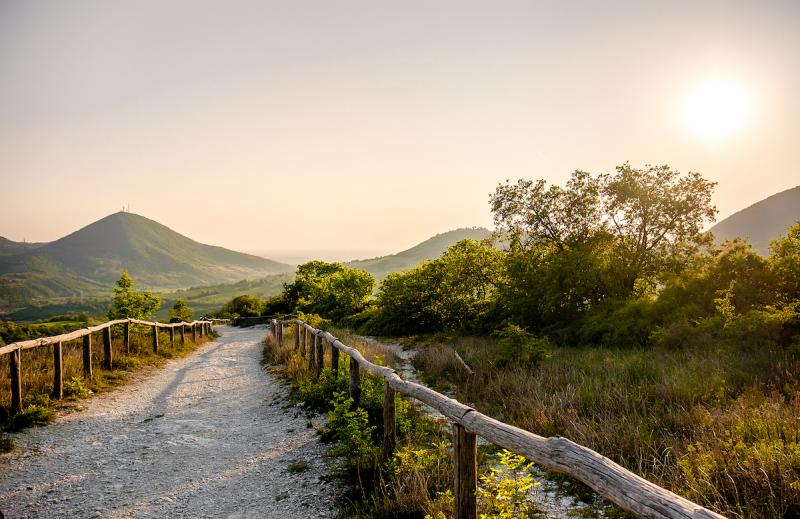The beauty of the Italian landscape is revealed not just in its art cities, seaside resorts and wondrous mountains, but also, and maybe especially, in its gentle rolling hills where life flows quietly, immersed in a bucolic setting. Let’s discover five Italian hilly landscapes not to be missed, perfect for a road trip amid ancient villages and foodie finds.
Colli Euganei (Veneto)
Rising out of the Venetian plain, in the province of Padua, the Euganean Hills are a group of reliefs of volcanic origin not higher than 600 meters.
Due to their extraordinary biodiversity, the Colli Euganei are protected as part of a regional park, the first to be established in the Veneto region.
The main attraction of the area is the Terme Euganee: five spa towns that take advantage of the salty-bromine-iodine waters, which flow in a large area on the north-eastern edge of the Euganean Hills; with their unique thermo-mineral properties, they are used for both therapeutic and aesthetic treatments. Here, you can enjoy mud baths, massages, thermal pools and treatments and relaxation. The five towns of Abano Terme, Montegrotto Terme, Galzignano Terme, Battaglia Terme and Teolo form the largest thermal center in Europe.
The Colli Euganei are dotted with picturesque villages, such as Arquà Petrarca, where the 14th-century poet Francesco Petrarca, a native of Arezzo, spent the last years of his life. Monselice, just 20 km southwest of Padua, was described by Ralph Waldo Emerson as “the most picturesque town I have seen in Italy.” Its fortified rocca stands on top of a hill.
Hiking lovers will find breathtaking routes suitable for all levels.
Colli Piacentini (Emilia-Romagna)
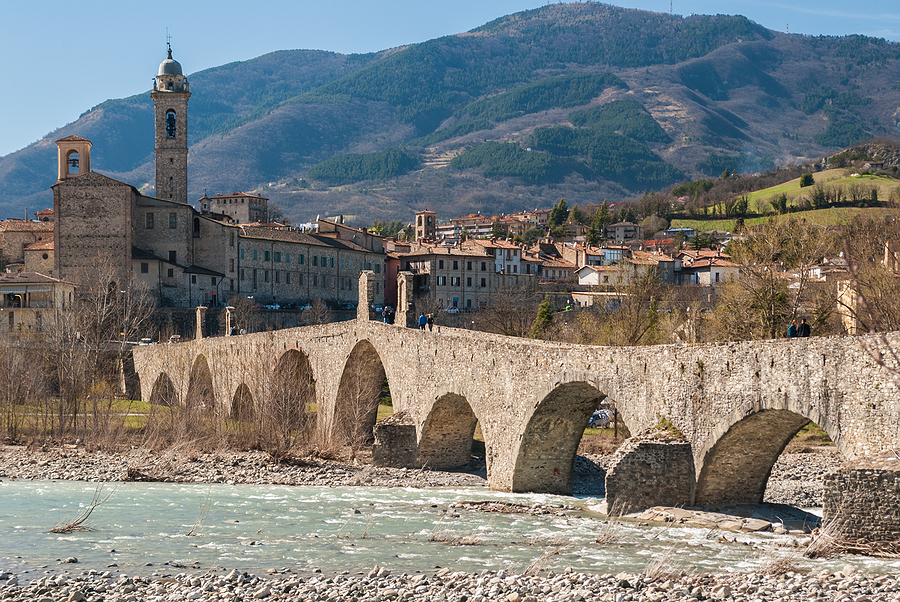
The Colli Piacentini (Piacenza hills) are located in the province of Piacenza, a town in north-western Emilia-Romagna, between the Po plain and the Ligurian border. This area has been inhabited since ancient times, as testified by the large number of castles and old villages, as well as the numerous archaeological finds.
The Colli Piacentini are made up of four main valleys: Val Nure, Val Tidone, Val d’Arda and Val Trebbia, the latter described by Ernest Hemingway as the “most beautiful valley in the world.”
What makes this area appealing to visitors is the pleasant landscape, a succession of gentle rolling hills often covered with vineyards. Wine is indeed a typical product of the area, and it has been so since the times of ancient Rome.
The Colli Piacentini are dotted with charming medieval villages such as Bobbio, Castell’Arquato and Grazzano Visconti; and medieval castles, such as Castello di Rivalta, Gropparello and Vigoleno.
The Colli Piacentini are also famous for their rich cuisine, with stuffed pasta dishes such as anolini and tortelli alla piacentina, as well as tasty cured meats and cheeses, which you can try at one of the many trattorias and agriturismi scattered in the valleys.
Colline marchigiane (Marche)
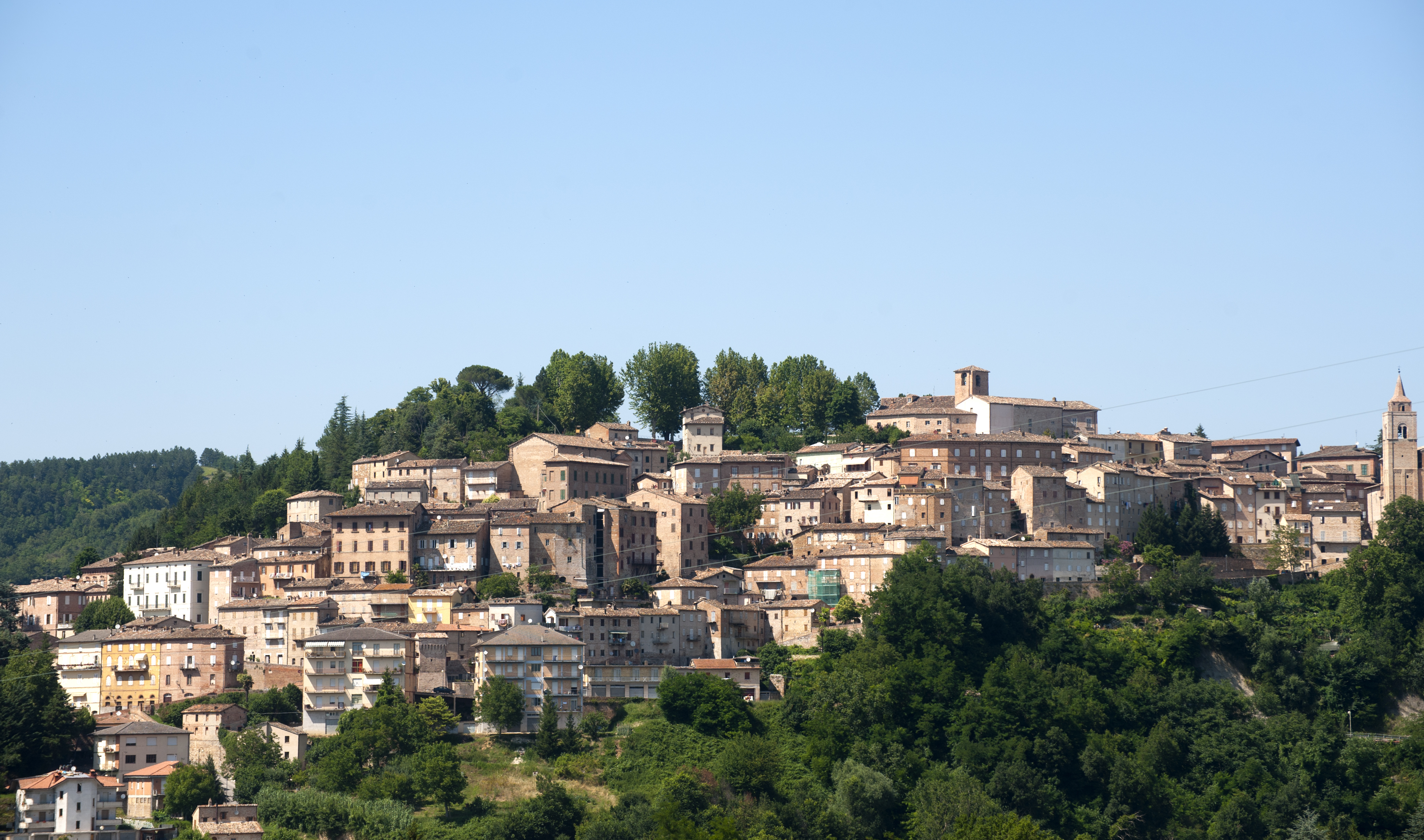
Rolling hills that gently descend from the Apennines to the coast define the landscape of Le Marche. Within the spectacular alternation of colors and crops that change with the changing of season are medieval villages, castles and fortresses.
The villages of Le Marche seem to come straight out of another dimension, where life is in sync with the rhythms of nature and the seasons. Among the towns and hamlets not to miss are: Ascoli Piceno, entirely built in travertine; Amandola, a small medieval village; the Abbey of Fiastra, one of the best preserved Cistercian abbeys in Italy, surrounded by a large nature reserve; Camerino, seat of an ancient university; Fabriano, famous for its centuries-old paper production; Loreto, a pilgrimage destination thanks to its ancient sanctuary; Osimo, an elegant small town rich in art and history; Fano, a popular seaside resort.
Colline Metallifere (Tuscany)
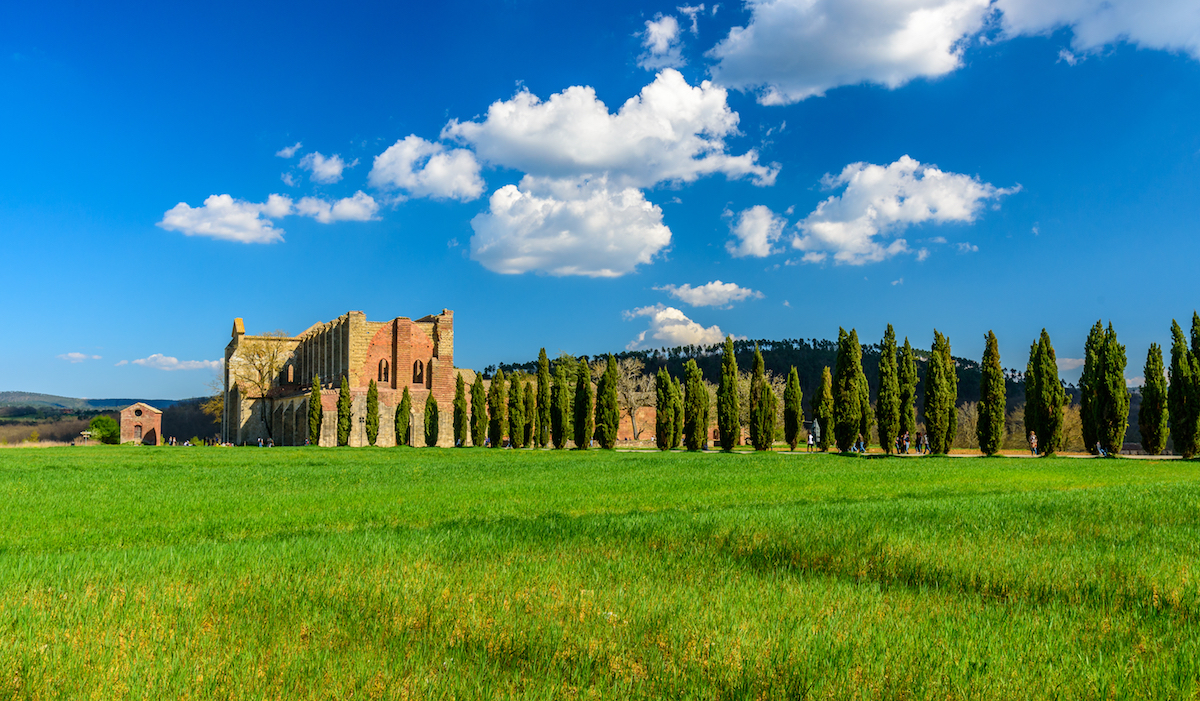
The Colline Metallifere (Metalliferous Hills) are located in the central-western part of Tuscany, divided between the provinces of Livorno, Pisa, Siena and Grosseto.
The wild, colorful landscape is the result of the subsoil’s richness of minerals. The so-called ‘Valle del Diavolo’ (Devil’s Valley) is dotted with blowholes and small cavities filled with water from which natural gas gushes. The metal resources of the Colline Metallifere were exploited since ancient times by the Etruscans.
Highlights of the area include Suvereto, rated among Italy’s most beautiful villages, with old houses, ancient roofs and artisan shops. Here you can hike, bike, horse ride, plus you can taste the area’s olive oil and wine; Chiusdino, a medieval village built during the Lombard domination of Tuscany, which has managed to preserve its medieval appearance; the Abbey of San Galgano and the Hermitage of Montesiepi, two of the most beautiful architectural complexes in Tuscany, are nearby. The Abbey of Saint Antimo, where Benedictine monks live, is near Montalcino and the Via Francigena, where you can go on long walks among vineyards, olive groves and rolling hills.
Altopiano delle Murge (Puglia)
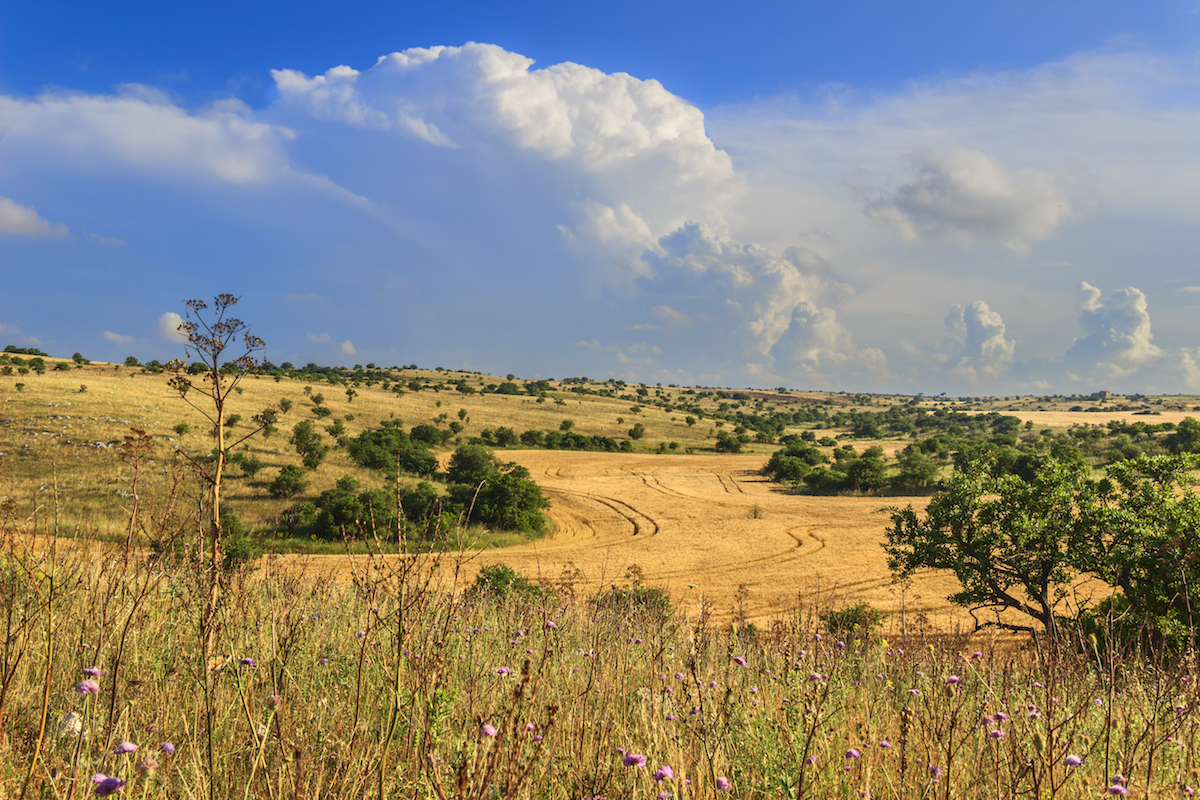
In the heart of Puglia is the hilly plateau of the Murge, characterized by karst phenomena such as ravines, caves, and sinkholes, all set amid olive trees, almond trees and vineyards, and typical Apulian structures such as tratturi and masserie (typical Apulian farms).
Castel del Monte is probably the best known attraction of the Murge, a a mysterious octagonal prism with an octagonal tower at each corner, built in the 13th century by Emperor Frederick II on a rocky hill overlooking the Murge plateau.
Those looking for some relaxation and tranquility should head to the Mercadante Forest of Cassano delle Murge, located within the Alta Murgia National Park, a large protected area. Castel del Monte is within the park, as is Gravina in Puglia, seat of the park, and best known for its numerous churches carved into the rock. It overlooks a deep ravine. Gravina is only half an hour from Matera and 15 minutes from Altamura, a city famous for its DOP bread and its impressive Norman Cathedral, which is one of the four Palatine Basilicas of Puglia.
